文章
Joss
2017年05月22日


Many of us have trouble keeping plants alive in our garden, and have quite the “black thumb”. Either we are too busy to maintain them, or our gardens have issues that make it difficult; hot, dry sites, poor soil or bad weather. Don’t let that stop you from growing flowers! There is hope for even the most murderous of gardeners… you can grow flowers, and you can plant them today and trust they will still be there next year and the year after that. Yes, you still have to make sure they get the occasional drink of water, and make sure you aren’t planting them deep in the barren wasteland of the Arctic…but other than that? Here are TGG’s best picks for easy to grow flowers for any garden. (Oh, and these plants are favs of expert gardeners too!)
Number 5
Thyme (pictured above)
While most of you recognize this as a spice from the kitchen cupboard, there are many very ornamental varieties that can offer texture, color and scent in your garden. Oh, and did I mention they grow like weeds? In a good way, of course. Drought resistant and sun lovers, these plants come in creeping forms to tuck between pavers, and larger varieties that fit right into any garden bed. Flowers are usually white, pink or red, and cover the plants spring through fall. They are fragrant when crushed, make great filler for flower arrangements, and attract butterflies like crazy! These plants come back every year, and yes, you can use them in the kitchen!
Number 4
Cosmos

This flower is an annual, which means it dies after one season, but it reseeds itself so prolifically you would never know it! Each season new seedlings will come up on their own, with no help from you at all. Beautiful daisy like flowers are borne on tall ferny foliage in purples, pinks and whites. All they need is a little water and at least half a day of sun, and they will provide you with armfuls of cut flowers all season long. This is our best budget pick… easily grown from one packet of seeds, and renews itself each year after that with no more seeding needed. Simply rake your spot smooth, sprinkle seeds, lightly cover with dirt and water…That’s it! They will do the rest… This flower is great as filler in a garden bed that has empty spots, or makes a dramatic show as aw hole bed in itself.
Number 3
Mexican Feather Grass
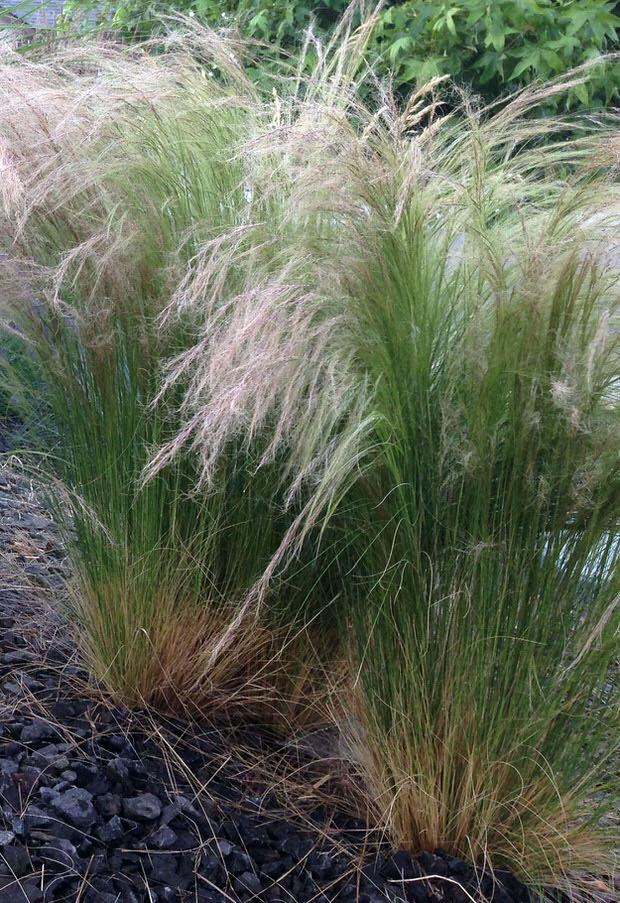
Mexican feather grass is my choice for an unbeatable ornamental grass for my area, but there are similar grasses if you live in a zone colder than 6. This feather grass (Nasella, formerly Stipa) is incredible drought and heat tolerant, self seeds like crazy (may drive you nuts, but eay to pull out if they seed in an unlikely place) and add n updated look to any garden. These little grasses grow to 24 inches and as wide, and are topped with fluffy white “flowers” through the summer. Which, by the way, look fantastic right through the winter after the grass has turned golden brown. You can plant these gems in a modern, more orderly way, or let them create a more natural garden effect. You can pot them into containers, and use them to add texture and movement to a stale garden bed. At TGG we are big fans of all ornamental grasses, but this is one of our go-tos!
Number 2
Coneflowers

The hottest perennial in any nursery right now are coneflowers, and with good reason. Originally purple wildflowers from the prairie states, these new hybrids have been bred to provide incredible color varieties, compact form and still retain the drought and disease resistance of the original plant. We love some of the new tropical colors, like “Flame Thrower” or “Indian Summer”. Also, green and white varieties, and even double flowering forms! Some varieties are great for containers, try Pow Wow Wild Berry, one of our new favs… They require occasional watering, and they bloom better if their spent blooms are removed, although not necessary in may of the newer varieties. Fun fact: The parent plant, Echinacea, is the same herbal supplement many use to ward off colds and fevers!
Our top pick for easiest flower to grow – Number one!
Yarrow

2
2
文章
Andrea
2017年05月22日


I’ve always loved having edibles in my garden. It isn’t a new idea, cottage gardens in Europe traditionally combined growing vegetables for the family along with table flowers, due to the small spaces most people had in those times. And cottage gardening continues to be one of the most popular gardening styles, because of the charm and possibilities that those type of gardens hold. I suppose there is something satisfying about an ornamental edible garden that touches on our needs for survival, but acknowledges our need for beauty. And so it perseveres, but edible gardens for beauty lost their appeal in the new century. Fortunately, with the new awareness of “green” living, and the DIY movement in design, gardeners are looking at their spaces in new ways. We don’t plant any longer within a structure of “rules”. We plant, and design, for that matter, leaning towards trying things that are new, pushing the envelope a bit, and being unique.
Ornamental edible gardens are becoming hot… with small spaces common and the desire to grow at least some of our own food, we need to see this more!
Some easy guidelines for growing ornamental edibles?
Remember to balance edibles that have a short growing season with edibles that are evergreen, or at least last all season. You don’t want a big hole in your garden when the lettuce is down for the summer.
Edibles can include herbs, veggies, fruits and some flowers too!
Remember texture is very important in an edible garden.
Don’t forget that the color of fruit or veggies affect the design as well. Hot peppers look great in glossy green, but add a pop of red when they mature!
Remember the basics… shade plants in shade gardens, sun in sun gardens. That having been said, most edible gardens will do better with 6 hours or more of sun a day. Some edibles, such as lettuce and some herbs, prefer afternoon shade. Plan accordingly.
Watch for pests, and treat as necessary. However, integrating herbs into your edible design can actually help minimize some pest problems.
Some ideas for ornamental edible plants?
Red and green leaf lettuce.
Cabbages
Other greens, such as red swiss chard and celery.
Herbs
Artichokes
Edible flowers such as roses, day lilies, pansies, nasturtiums and honeysuckle
Fruit trees and bushes. Blueberry blushes are especially handsome plants.
Still not convinced an ornamental edible garden can be beautiful?

Cabbage and tulips!

A pretty lettuce border.

Herbs used in a formal design.

Cabbage in a boxwood border.

Herbs in a beautiful combination border by Rosalind Creasy.
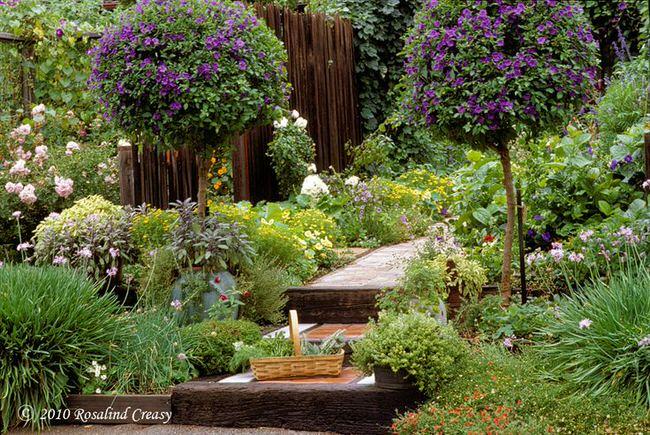
0
0
文章
lenny
2017年05月22日
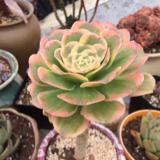

Herb gardens are my favorite type of garden. There is something really satisfying about plants that do it all – they are pretty, fragrant, tasty and even medicinal! They can be grown in a formal style, or rock an old boot! They are practical plants full of nostalgia and charm, and can grace the finest table while tantalizing virtually all the senses. And they have a quality about them they makes you want to bake from scratch, buy organic and pour good wine. But rather than bring you pretty photos of great English herb gardens (ok, there are a few of those here, I confess…) we have some creative outdoor herb gardens and projects to make you an herb convert! Our feature photo above is from ‘Ginger Snap Crafts’. This DIY herb garden project takes a little bit of handy work with tools but we just love it! See how they did it here.
‘Brooklyn Limestone’ created this DIY vertical herb garden, and she shows you how step by step… Perfect if you just want some kitchen herbs right off the back door! I love how she did this, and labeled with a paint pen. But if, and this is a big if, your garden will be under cover, what about using chalkboard paint?


Want a neat herb garden? Plant in pots in the ground, like they did in this garden in France, courtesy of ‘Townmouse‘.

Easy idea for a quick herb garden, that doesn’t lack any charm… from ‘Precious Sister’, this herb wagon garden is just what we all need… seriously, does it get better than this? Also, it is up higher to make sure someone who has knee issues (me) can take care of it. Would this be a great gift for an elderly friend? An herb wagon??? Amazing!

Laura from ‘Finding Home’ is my new hero. This kitchen herb garden is the perfect back porch decor, and yet, it makes sure the parsley is right their when you are cooking Sunday night soup this fall! I love the dishes as accents, and the door? Total charmalicious…

Need a DIY project, and not looking for cute, but just cool? Try this DIY hanging herb garden by ‘Homemade Modern’, made from pine boards, rope and zip ties!

This DIY outdoor living wall was create by ‘Dremel Weekends’ for ‘Curbly’, and this is clearly the way to grow herbs. Plenty of light gets in, easy to water, no weeding, good air circulation… win, win!

Lina at ‘Fancy Frugal Life’ made these DIY stacked herb gardens, complete with chalkboard markers! Great for small gardens that need a space saving solution, or just because you want something with more interest. Cute! Complete tutorial with photos.

This is a really creative idea… DIY herb garden in bottles! 11 Eureka created this from mercury bottles meant to be candleholders… this is far and away a better use for them! I’d love these hung on porches, decks and even in trees!

Ok, now that we have you inspired that you too, can have an herb garden… It’s time to really get inspired!



Last we have the herb garden at Sissinghurst Castle, Just in case you want to dream.

0
0
文章
Abigal
2017年05月22日

Checkout 19 best pergola plants for your garden. These climbing plants for pergolas and arbors can also be grown in small gardens easily.

There are so many climbing plants that can be guided over a pergola to get a welcome shade in warm weather. For your help, here we have listed 19 best pergola plants. This list is a combination of both tropical and temperate vines.
Best Pergola PlantsRose

Roses are classic. They are the favorite plants of most gardeners as they produce a feeling of being special, tranquility, nostalgia, romance, and happiness. Climbing varieties are perfect to cover a pergola and arches.
Clematis

Surely, one of the best pergola plants. Clematis is a spectacular vine as it blooms abundantly, flowering usually starts from spring. You can grow it easily and combine with other plants, especially with climbing roses to get a more exquisite view.
Honeysuckle

The fragrance of honeysuckle flowers is nostalgic and multiplies when dusk sets. It has more than 180 different species, almost all are creepers. It is a very large vine that grows rapidly, a single honeysuckle plant can cover up a big sturdy pergola easily.
Passion Flower (Passiflora)

Passion flower is a beautiful fast growing, hardy perennial in tropics. The heady fragrance, colorful flowers, and edible fruits make it one of most desirable climbing plant you can have in your garden. You can also grow it on your balcony, rooftop or patio garden. Growing passion flower is easy if you live in the subtropical or tropical climate (USDA Zone 8 – 11). If you live in the temperate region then look for its cold hardy cultivars. In very cool climate you can grow it as annual.
Jasmine
 "1000084172_1000000025_1487218527.jpg">Surely, jasmine is the most intense flower. Its fragrance can be smelt from far-far away. So if you love fragrant plants, grow it. In warm and humid climates jasmine blooms year round. In cooler zones, grow it as annual.
"1000084172_1000000025_1487218527.jpg">Surely, jasmine is the most intense flower. Its fragrance can be smelt from far-far away. So if you love fragrant plants, grow it. In warm and humid climates jasmine blooms year round. In cooler zones, grow it as annual.
Grape Vine

Truly one of the best climbing plants for pergolas, grape vine will not only give shade and a warm sitting place but juicy grapefruits too. You can grow this in a variety of climates. Grapevine varieties are native to Mediterranean, Central Asia, America and South West Asia, thus cultivars available diversely. Here’s an interesting article on training grapevine on arbor, which you can read.
Wisteria

Lavender blue color of wisteria flowers and the sweet fragrance is fascinating. However, wisteria is an aggressive grower but it takes the time to establish. You can grow wisteria in temperate and subtropical regions (USDA Zones 4 – 9). If you have a large sturdy pergola grow wisteria on it, you’ll need to prune regularly to control its growth.
Trumpet Vine (Campsis radicans)

Due to its showy trumpet-shaped flowers, it is called trumpet vine. Each of trumpet vine flowers can appear in different colors (orange, yellow or red). The flowers attract pollinators: bees, and hummingbirds. This plant looks great on the arches, pergolas, and trellises. It grows best in full sun to part sun.
Bignonia (Cross Vine)

Another beautiful climber, related to trumpet vine. Its delicate bell-shaped flowers look great on pergolas. It is a fairly vigorous plant and tolerates mild to moderate frost, grows best in USDA Zones (6 – 9). You can also try growing it in tropics (Zone 10) in shade from afternoon sun.
Ivy

For the arbors, pergolas, and gazebos situated in shade, ivy is best. It is low maintenance and tolerates the exploits of weather and provides lush green color. You can also choose variegated varieties.
Bougainvillea

The climbing varieties of bougainvillea are suitable for the pergolas. This plant loves the sunny position and does not like wet feet. Among the most frequently cultivated colors are pink, red, yellow and purple but it comes in many other colors too.
Morning glory

A vine that greets the morning sun with its pretty blooms. Morning glory vine is fairly easy to grow and it perks up quickly. A good plant to cover up a pergola that is in a sunny position.
Kiwi

A kiwi vine takes a lot of space to grow that is why it is one of the best pergola plants in our list. In order to get fruits from the kiwi plant, you’ll need to have both male and female plants for pollination.
Sweet pea

Don’t grow bush type varieties if you are growing it over the pergola. Plant sweet peas in the sun and in a well-drained soil. Grow sweet peas in warm zones in fall and winter. In temperates plant this fragrant vine in spring or summer.
Bleeding heart

If you’re searching for a climber for shade, bleeding heart is one. Its beautiful heart shaped flowers looks exotic. This plant requires moist soil and a location that receives partial sun. Bleeding heart is suitable for cold temperate climates and can be grown in USDA Zones 3 – 9.
Tropical Bleeding Heart (Glory Bower)

Exquisite flowers and dark glossy foliage. The tropical bleeding heart vine is native to Western Africa, its flowers resemble the bleeding heart (Dicentra spectabilis), see above. Both have different requirements and tropical bleeding heart thrives well in heat and warmth (USDA Zones 10 – 11). *You can also grow it as a houseplant.
Butterfly Pea

Butterfly pea flowers are the best food source for butterflies. It is a legume and both flowers and seed pods are edible. The most attractive thing about butterfly pea vine is its shiny deep blue flowers. Butterfly pea is a tropical vine and grows best in USDA Zones 10 and 11. In a cold temperate zone, grow this perennial as annual.
Golden Hops

A fast growing vine that quickly covers up the trellises, pergolas, and arches. Golden hops can grow up to 8 m long without any difficulty. What makes it beautiful is its lime green or yellowish foliage. It is a low maintenance cold hardy vine (USDA Zones 4 – 8), not suitable for warm climates.
Climbing Hydrangea

Growing climbing hydrangea vine is rewarding due to its glossy heart-shaped foliage and fragrant white flowers that appear in clusters in spring to summer. It is a slow grower and requires training and pruning. You can grow climbing hydrangea if you live in the colder region within USDA Zones 5 – 8.

There are so many climbing plants that can be guided over a pergola to get a welcome shade in warm weather. For your help, here we have listed 19 best pergola plants. This list is a combination of both tropical and temperate vines.
Best Pergola PlantsRose

Roses are classic. They are the favorite plants of most gardeners as they produce a feeling of being special, tranquility, nostalgia, romance, and happiness. Climbing varieties are perfect to cover a pergola and arches.
Clematis

Surely, one of the best pergola plants. Clematis is a spectacular vine as it blooms abundantly, flowering usually starts from spring. You can grow it easily and combine with other plants, especially with climbing roses to get a more exquisite view.
Honeysuckle

The fragrance of honeysuckle flowers is nostalgic and multiplies when dusk sets. It has more than 180 different species, almost all are creepers. It is a very large vine that grows rapidly, a single honeysuckle plant can cover up a big sturdy pergola easily.
Passion Flower (Passiflora)

Passion flower is a beautiful fast growing, hardy perennial in tropics. The heady fragrance, colorful flowers, and edible fruits make it one of most desirable climbing plant you can have in your garden. You can also grow it on your balcony, rooftop or patio garden. Growing passion flower is easy if you live in the subtropical or tropical climate (USDA Zone 8 – 11). If you live in the temperate region then look for its cold hardy cultivars. In very cool climate you can grow it as annual.
Jasmine
Grape Vine

Truly one of the best climbing plants for pergolas, grape vine will not only give shade and a warm sitting place but juicy grapefruits too. You can grow this in a variety of climates. Grapevine varieties are native to Mediterranean, Central Asia, America and South West Asia, thus cultivars available diversely. Here’s an interesting article on training grapevine on arbor, which you can read.
Wisteria

Lavender blue color of wisteria flowers and the sweet fragrance is fascinating. However, wisteria is an aggressive grower but it takes the time to establish. You can grow wisteria in temperate and subtropical regions (USDA Zones 4 – 9). If you have a large sturdy pergola grow wisteria on it, you’ll need to prune regularly to control its growth.
Trumpet Vine (Campsis radicans)

Due to its showy trumpet-shaped flowers, it is called trumpet vine. Each of trumpet vine flowers can appear in different colors (orange, yellow or red). The flowers attract pollinators: bees, and hummingbirds. This plant looks great on the arches, pergolas, and trellises. It grows best in full sun to part sun.
Bignonia (Cross Vine)

Another beautiful climber, related to trumpet vine. Its delicate bell-shaped flowers look great on pergolas. It is a fairly vigorous plant and tolerates mild to moderate frost, grows best in USDA Zones (6 – 9). You can also try growing it in tropics (Zone 10) in shade from afternoon sun.
Ivy

For the arbors, pergolas, and gazebos situated in shade, ivy is best. It is low maintenance and tolerates the exploits of weather and provides lush green color. You can also choose variegated varieties.
Bougainvillea

The climbing varieties of bougainvillea are suitable for the pergolas. This plant loves the sunny position and does not like wet feet. Among the most frequently cultivated colors are pink, red, yellow and purple but it comes in many other colors too.
Morning glory

A vine that greets the morning sun with its pretty blooms. Morning glory vine is fairly easy to grow and it perks up quickly. A good plant to cover up a pergola that is in a sunny position.
Kiwi

A kiwi vine takes a lot of space to grow that is why it is one of the best pergola plants in our list. In order to get fruits from the kiwi plant, you’ll need to have both male and female plants for pollination.
Sweet pea

Don’t grow bush type varieties if you are growing it over the pergola. Plant sweet peas in the sun and in a well-drained soil. Grow sweet peas in warm zones in fall and winter. In temperates plant this fragrant vine in spring or summer.
Bleeding heart

If you’re searching for a climber for shade, bleeding heart is one. Its beautiful heart shaped flowers looks exotic. This plant requires moist soil and a location that receives partial sun. Bleeding heart is suitable for cold temperate climates and can be grown in USDA Zones 3 – 9.
Tropical Bleeding Heart (Glory Bower)

Exquisite flowers and dark glossy foliage. The tropical bleeding heart vine is native to Western Africa, its flowers resemble the bleeding heart (Dicentra spectabilis), see above. Both have different requirements and tropical bleeding heart thrives well in heat and warmth (USDA Zones 10 – 11). *You can also grow it as a houseplant.
Butterfly Pea

Butterfly pea flowers are the best food source for butterflies. It is a legume and both flowers and seed pods are edible. The most attractive thing about butterfly pea vine is its shiny deep blue flowers. Butterfly pea is a tropical vine and grows best in USDA Zones 10 and 11. In a cold temperate zone, grow this perennial as annual.
Golden Hops

A fast growing vine that quickly covers up the trellises, pergolas, and arches. Golden hops can grow up to 8 m long without any difficulty. What makes it beautiful is its lime green or yellowish foliage. It is a low maintenance cold hardy vine (USDA Zones 4 – 8), not suitable for warm climates.
Climbing Hydrangea

Growing climbing hydrangea vine is rewarding due to its glossy heart-shaped foliage and fragrant white flowers that appear in clusters in spring to summer. It is a slow grower and requires training and pruning. You can grow climbing hydrangea if you live in the colder region within USDA Zones 5 – 8.
0
0
文章
Micky
2017年05月22日

Learn how to grow carob tree. Growing carob tree is easy, it’s also grown as ornamental plant in the gardens.
Growing Carob is durable evergreen tree native to the Mediterranean. It has bright, green beautiful foliage, cluster of small flowers and edible pods that are used as cocoa powder substitute.
Carob pods contain about 8% protein, vitamins A and B and about one-third of calories than chocolate.
USDA Zones — 9-11
Propagation Method — Seeds
Difficulty — Easy
Soil pH — 6 – 8
Carob Tree Growing Conditions
Carob tree grows about 10 meter tall (exceptionally 15 m). It is a dioecious tree, which means each tree bears male or female flowers. Carob tree can bear up to 20 F temperature.
Carob tree has a thick and twisted trunk with a rough and brown bark. Its leaves are oval, dark green and shiny that are 12 to 30 centimeters long. Its foliage provides a welcome shade in hot countries. They form a very effective curtain against noise too.
Growing Carob from Seeds
The fresh carob tree seeds germinates quickly and easily. If you don’t find fresh seeds you can grow it from dry seeds which is scarified and soaked in water until they double in size. They can be planted in spring or fall.
Requirements for Growing Carob TreeSoil
The carob tree is a tree that grows in many soil types including hillsides with deep sandy soil or loam, even arid. It does not tolerate acidic or wet soils but requires good drainage.
Sun
Carob tree needs full sun and a position sheltered from wind.
Watering
It is resistant to drought. However, watering must be provided during dry seasons, especially if the tree is grown for its fruit.
Carob Tree Care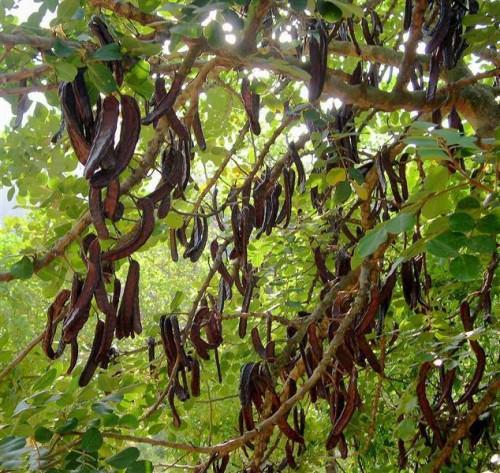
Once fully developed carob tree can withstand temperatures up to -7 ° C, but frost during flowering period can reduce or sometimes prevent fruiting. The tree is ideally grown in regions with a Mediterranean climate.
Fertilizer
Fertilizer is often unnecessary for carob trees. However, a 8-3-9 fertilizer can be applied occasionally to give plant a boost.
Pruning
Growing Carob is durable evergreen tree native to the Mediterranean. It has bright, green beautiful foliage, cluster of small flowers and edible pods that are used as cocoa powder substitute.
Carob pods contain about 8% protein, vitamins A and B and about one-third of calories than chocolate.

USDA Zones — 9-11
Propagation Method — Seeds
Difficulty — Easy
Soil pH — 6 – 8
Carob Tree Growing Conditions
Carob tree grows about 10 meter tall (exceptionally 15 m). It is a dioecious tree, which means each tree bears male or female flowers. Carob tree can bear up to 20 F temperature.
Carob tree has a thick and twisted trunk with a rough and brown bark. Its leaves are oval, dark green and shiny that are 12 to 30 centimeters long. Its foliage provides a welcome shade in hot countries. They form a very effective curtain against noise too.
Growing Carob from Seeds
The fresh carob tree seeds germinates quickly and easily. If you don’t find fresh seeds you can grow it from dry seeds which is scarified and soaked in water until they double in size. They can be planted in spring or fall.
Requirements for Growing Carob TreeSoil
The carob tree is a tree that grows in many soil types including hillsides with deep sandy soil or loam, even arid. It does not tolerate acidic or wet soils but requires good drainage.
Sun
Carob tree needs full sun and a position sheltered from wind.
Watering
It is resistant to drought. However, watering must be provided during dry seasons, especially if the tree is grown for its fruit.
Carob Tree Care

Once fully developed carob tree can withstand temperatures up to -7 ° C, but frost during flowering period can reduce or sometimes prevent fruiting. The tree is ideally grown in regions with a Mediterranean climate.
Fertilizer
Fertilizer is often unnecessary for carob trees. However, a 8-3-9 fertilizer can be applied occasionally to give plant a boost.
Pruning
0
0
文章
Abigal
2017年05月21日

When the warmer seasons come around, most of us like to spend some evenings (or most!) lounging in our yards and gardens. Having good outdoor lighting can make your outdoor space a usable and enjoyable spot to visit with loved ones, have a late snack, or sip a good glass of red. Try these backyard lighting ideas and tutorials to get your yard in shape for when the sun goes down! Our feature photo below is a gorgeous backyard globe light set up by ‘Willow Jade Floral‘ in L.A. If I could have my whole yard look just like this!

Make these geometric light columns with this tutorial from ‘Martha’. This uses just three simple materials, and would be great for a graduation or Fourth of July party!

From ‘House of Fifty’ magazine, make mason jar candle lanterns! These are easy, and who doesn’t love mason jars!

Another version of a mason jar lantern, these we found on Pinterest, but can’t find the original source. Please share if you know where these are from! We really like how they look hanging against the wood fence. It makes for a really pretty look, but if you do this, consider using LED candles instead.

This outdoor lighted cube table is a woodworking tutorial from ‘Lowes’… This would make additional lighting in your patio area unnecessary!

A great idea from ‘Sunset‘… hang tea light lanterns from different heights as an outdoor chandelier…

Robin at ‘All Things Heart and Home’ has a tutorial for her easy DIY outdoor chandelier made from grapevine balls! Love this project!

Ok, these are just cool. These are cracked log lamps made by artist Duncan Meerding, via ‘Recycled Interiors’. You have to go check out how he makes these! I would love these all through a woodland garden! Fairy garden!
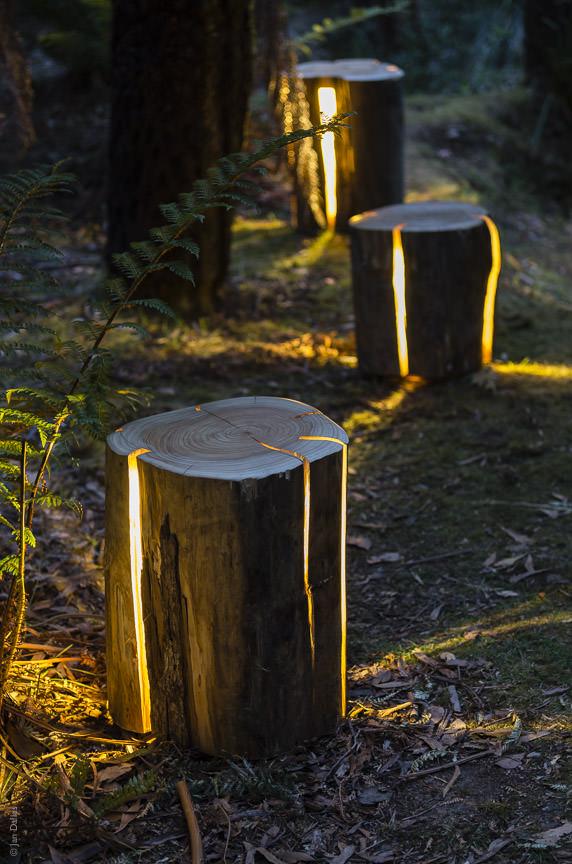
Love the idea of string lights, but want to make it really amazing? Just use this photo from ‘Fondly Forever‘ to inspire you!

Use uplighting to brighten dark corners or to light focal plantings at night. Photo by Laura Joliet for ‘The NY Times‘.
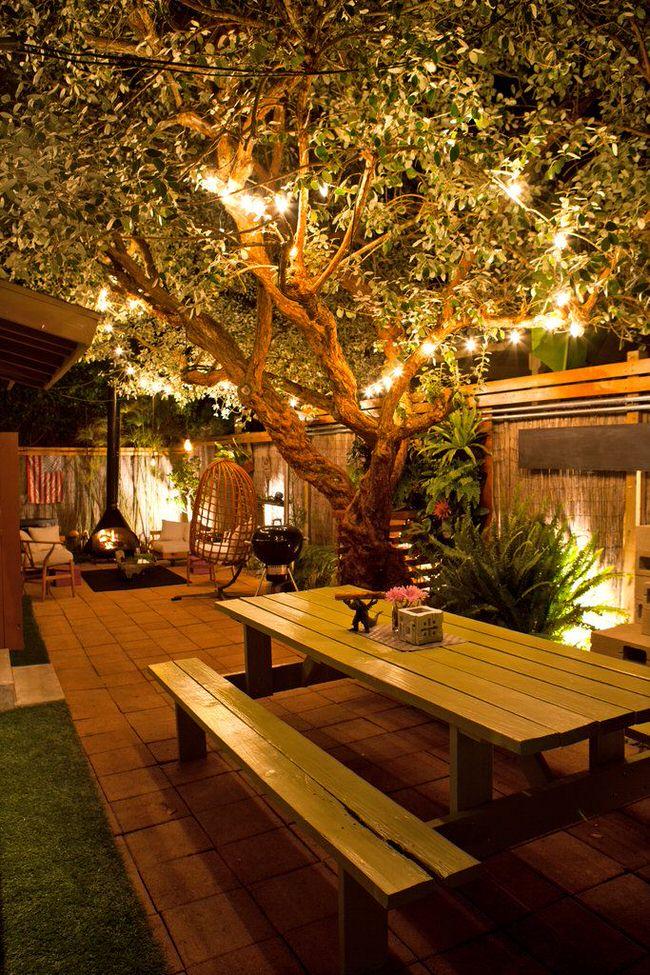
Try lighting the pass through areas between yards to add dimension to your outdoor space. Photo by ‘Martha‘.

Ok, last we have these moonlight globes from ‘Home Infatuation’… These. Are. Cool. Not cheap, but amazingly cool! They can float, or be mounted, and can be recharged over and over.


Make these geometric light columns with this tutorial from ‘Martha’. This uses just three simple materials, and would be great for a graduation or Fourth of July party!

From ‘House of Fifty’ magazine, make mason jar candle lanterns! These are easy, and who doesn’t love mason jars!

Another version of a mason jar lantern, these we found on Pinterest, but can’t find the original source. Please share if you know where these are from! We really like how they look hanging against the wood fence. It makes for a really pretty look, but if you do this, consider using LED candles instead.

This outdoor lighted cube table is a woodworking tutorial from ‘Lowes’… This would make additional lighting in your patio area unnecessary!

A great idea from ‘Sunset‘… hang tea light lanterns from different heights as an outdoor chandelier…

Robin at ‘All Things Heart and Home’ has a tutorial for her easy DIY outdoor chandelier made from grapevine balls! Love this project!

Ok, these are just cool. These are cracked log lamps made by artist Duncan Meerding, via ‘Recycled Interiors’. You have to go check out how he makes these! I would love these all through a woodland garden! Fairy garden!

Love the idea of string lights, but want to make it really amazing? Just use this photo from ‘Fondly Forever‘ to inspire you!

Use uplighting to brighten dark corners or to light focal plantings at night. Photo by Laura Joliet for ‘The NY Times‘.

Try lighting the pass through areas between yards to add dimension to your outdoor space. Photo by ‘Martha‘.

Ok, last we have these moonlight globes from ‘Home Infatuation’… These. Are. Cool. Not cheap, but amazingly cool! They can float, or be mounted, and can be recharged over and over.

0
1
文章
Abigal
2017年05月16日


We all know by now that #composting is important to the #environment . It allows natural waste to return to the earth, while adding a nutrient rich material to our gardens. Here is a break down of the top 3 most common techniques for composting for the home #gardener .

Hot Composting – Open Bins
Hot composting is the most intensive method, but also the fastest way to get finished compost. It involves building compost piles that have a balance of green material (nitrogen), oxygen, water and brown material. The most common method is a three bin open bin method. Made of open slats to allow the piles to breathe, this option is not a great choice for those with limited space, or who will not keep up with turning the pile…. But for those with a little space in the back of the garden, it’s the fastest way to generate a larger amount of compost, and to utilize a larger amount of scraps. Here’s how to make an open bin hot compost pile.
Build or buy three, side by side compost bins. ‘Backyard Feast’ has a complete tutorial on building the ultimate compost bin.

Bin #1 will be for brown materials…kind of a holding area for things you want to compost.
Bin #2 is where all the action happens.
In this bin, layer brown and green materials (green materials include fresh grass, leaves, veggie scraps, etc… browns include dried leaves, twigs, and dead plant material) until you have a ratio of approximately 2 parts brown to 1 part green.
Wet the pile with water until moist, but not soggy.
Turn the pile regularly with a spading fork to allow air to reach the pile and to mix the nitrogen throughout the pile.
Wait for the pile to get hot, and to start composting for you! Basically, the more attentive you are to turning the pile, keeping it moist and not adding any new material until its finished, the faster you will get compost. That gives you a window of 6-12 months. Compost is done when it is warm, not hot, and smells and looks like a sweet soil amendment, and no longer like rotting cantaloupe. :) Move the compost in bin #2 to bin #3 to “settle” and continue to cool until you need to use it. Start another hot pile in bin #2 from all the stuff you have been holding in bin #1!
The benefits to having the three bin system is that you can continue to collect brown materials during the season in bin #1, and that once you move the compost to bin #3 to settle, you can start over again with a new compost pile. Moves things along a lot faster!
You can also create a hot compost pile in just one bin if you have don’t have space, or don’t have much material to compost… it just means you can only work on one pile of compost at a time. ‘This Old House’ shows you complete plans on making a single compost bin.

Hot Composting – Closed Bins or Tumblers
This is a one bin system where you use a closed bin or tumbler, add the same “hot” ratio of green to brown and water, then turn the bin itself to mix the ingredients once a week or so. This saves you from having to deal directly with the compost, and saves a little on your back as well! The downside is that you can only make a small amount of compost at a time. If you don’t want to buy a tumbler, ‘Full Measure of Happiness’ shows us how to make a DIY compost bin from a plastic garbage can!

A more intensive project will keep you composting like a pro. ‘Urban Farm Online’ has a tutorial for this DIY compost tumbler you can use year after year.

Cold Composting – Otherwise known as the lazy mans compost pile!
So for all of you groaning out loud because all that sounds like so much work, I have good news. Stuff will compost with or without your help. It’s just a matter of how fast! Cold composting works, but it can take 1-2 years, depending on what kind of materials you have in your pile. Basically, this is the way to do it…
Make a pile 3×3 feet of compostable materials, the smaller the pieces, the better, so shred!
Add some water, or not, and cover if you want to speed the process along… or not. :)
When, and if, you think of it… turn it, water it, and then forget it again.
Wait until it’s done. Voila!
This info graphic by Well Home tells your everything you need to know about hot and cold composting, and also some less well known (and one icky!) composting techniques.

That’s it! Three easy techniques for composting everyone should know! It’s not rocket science, and there is no compost police that is checking to make sure you have turned your pile this week. Just remember, the more attention you give it, the faster it will give you a wonderful, organic soil conditioner for your garden!
3
1
文章
Abigal
2017年05月02日

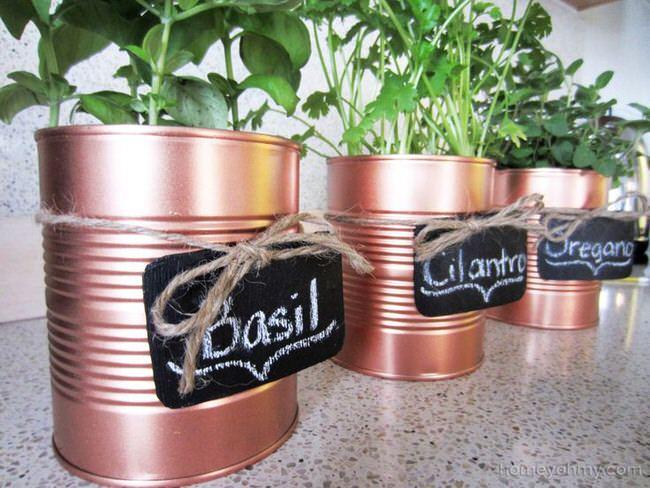
I love metal projects, and copper is a perfect medium to reflect the natural and changing state of a garden. Beautiful in all it’s forms, it is representative of how plants and gardens change through their seasons, and offer different interest at different stages. Also, it’s just really fun to work with! Relatively inexpensive, copper starts it’s life shiny and bright, and patinas over time to a lovely verdigris. Although I love that look, if you want your copper project to stay bright, simply seal it with an exterior grade clear sealer. So on to these great DIY copper garden projects that any of you can do in an afternoon! Our featured project, above, is a tutorial on how to make DIY copper tin can planters (and chalkboard tags!) from Homey Oh My! Easy and quick project with impact!
‘Tool Using Animal’ (via Instructables) made this incredible copper rain chain with copper tubing and solder. This is my fav rain chain project, and the tutorial is very complete, but I do notice he used a blow torch to solder the rings. I personally don’t own a blow torch, but it honestly gives the cleanest look, so if you have to borrow one, do! If you can’t or aren’t comfortable using one, look forward to the next project…

As promised, a copper rain chain made without a blow torch! Ex-Scapes made this DIY copper rain chain using copper wire instead of solder…
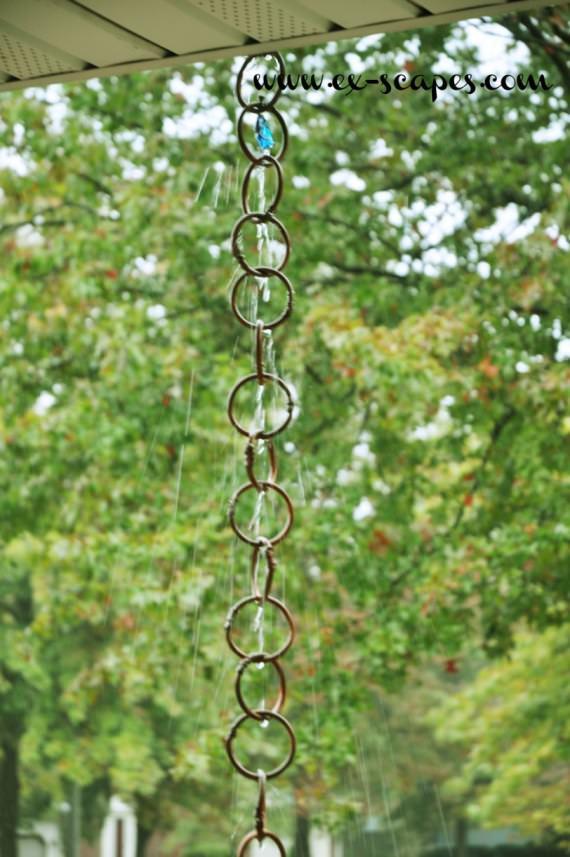
Simple, simple, simple! This copper mailbox by Sand and Sisal is a half hour project…really! What great curb appeal!
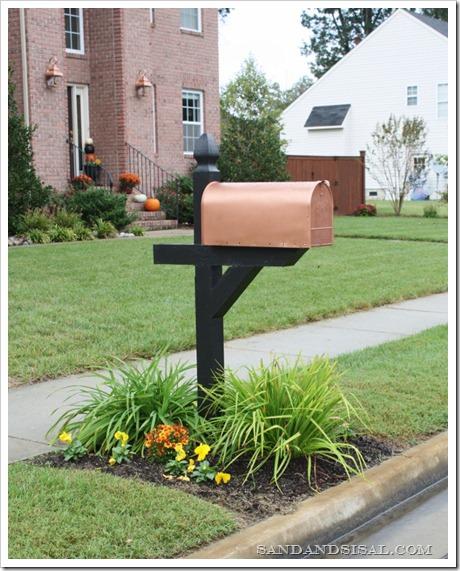
Ashley of Sugar and Cloth, and contributor at Poppytalk, created these DIY mini copper planters from copper fitting caps and a bottle of ketchup! Or catsup…whatever… Curious? Easy and cool! How about these with a moss garden?
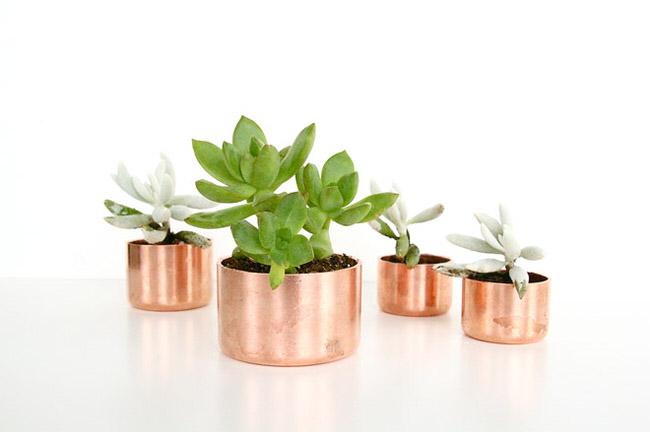
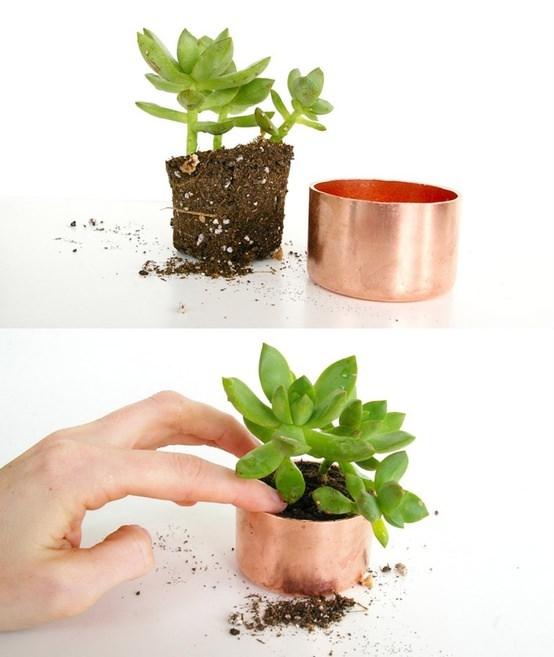
From the book, Trellises, Planters & Raised Beds from Cool Springs Press, this DIY copper coil trellis is easy and really amazing as art in the garden.

Another type of decorative copper trellis project, from Lowes. Complete directions, under $100.
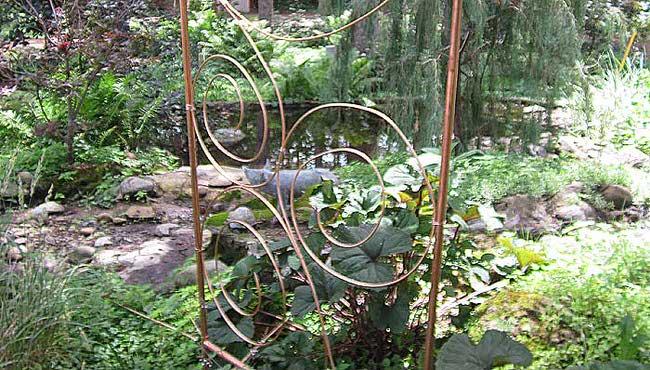
Another great project from Sand and Sisal, this DIY copper mobile is such an awesome idea, and so incredibly easy… make sure you choose the size of copper tubing that bends easily. (But not too easily!)
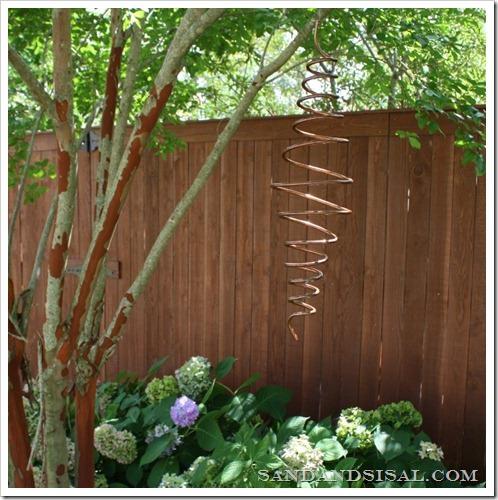
From Family Handyman, make this copper trellis for your garden from copper pipe for all your climbing plants… Can you imagine your roses, or even your cucumbers growing on this?
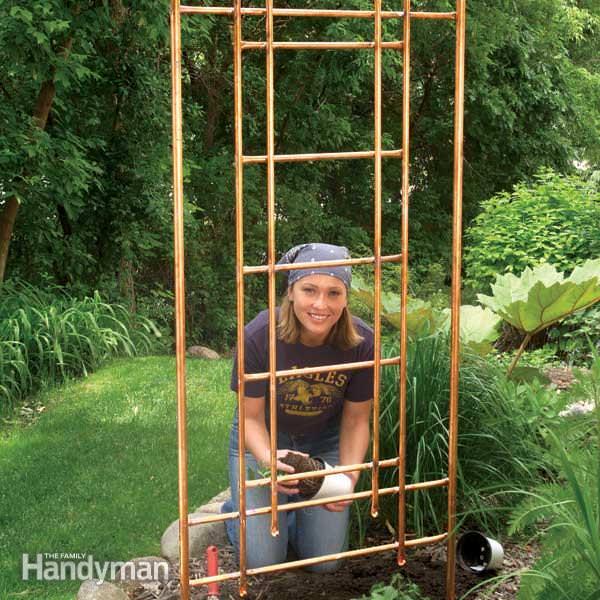
This copper tomato spiral from ‘Suzy Homefaker’ is both functional and decorative. See how she made it.
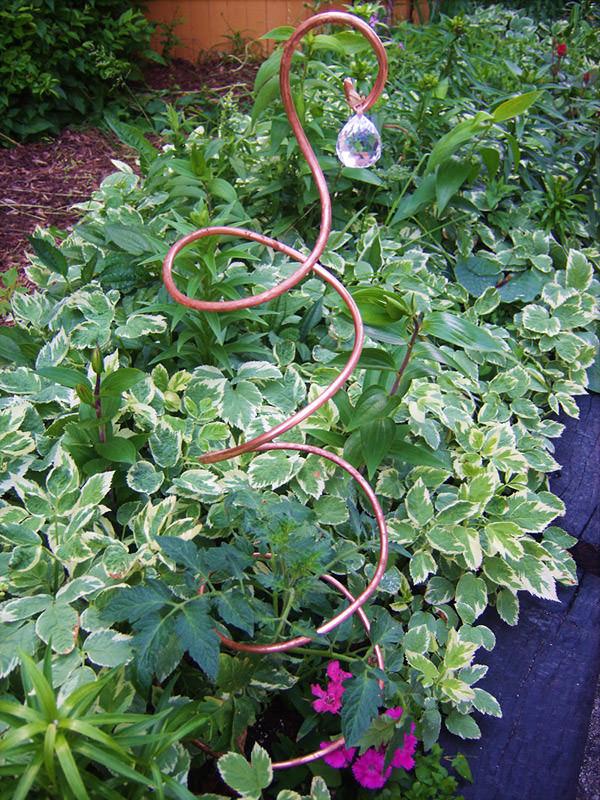
Finally, make copper wind chimes with the complete instructions by Chica and Jo. They use copper pipe, and remember your hardware store may be able to cut it for you!
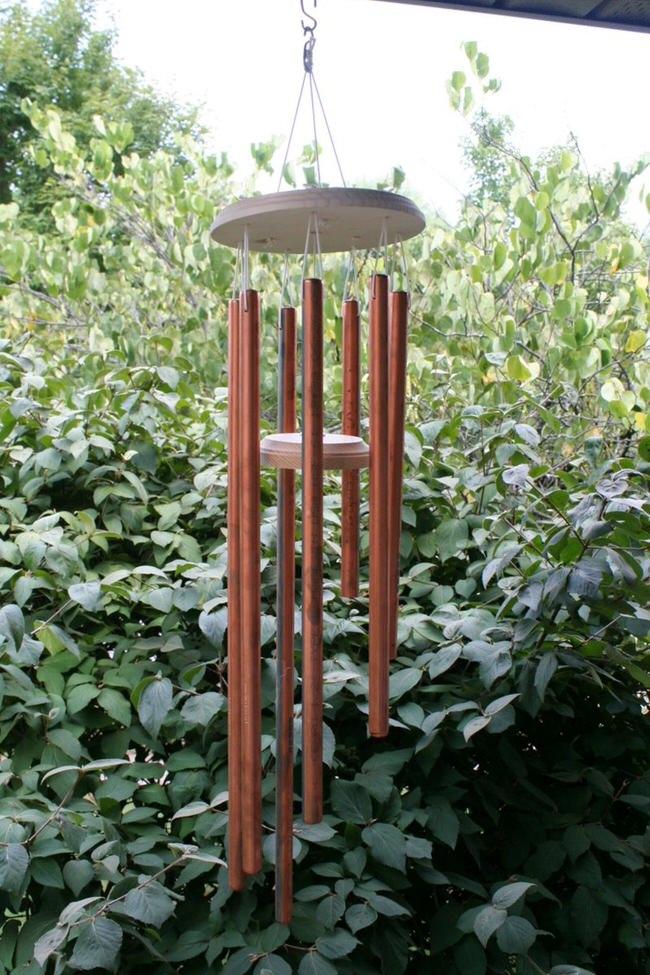
0
0
Beyond:I want to steal your copper model. It's cool.
文章
Abigal
2017年03月21日


One of the most popular theme gardens is a butterfly garden. Who can resist those delicate, magical creatures that float through the air, and can bring a smile to the face of the most grizzled old hermit? Let’s face it, everyone loves the butterflies. It isn’t hard to create a garden that is more friendly to butterflies visiting, and spending some time with you. Fall is a great time to put in butterfly plants and habitats, so that they are ready to bloom in the spring and summer, when butterfly sightings are at their peak. But you can plan a butterfly garden any time of year, and plant one in all seasons except the cold of winter. Heres what you need to know to bring in the butterflies!
Food
So one of the most obvious and effective ways to lure butterflies in, is by planting flowers that supply the nectar they prefer. While certain butterflies prefer particular flowers, (and that varies on area) there are some that are pretty safe bets for a good butterfly garden. The bonus here is that not only are all these plants gorgeous, some of them attract hummingbirds as well! Here are our top favs…
Butterfly Bush – One of our favorites, easy to grow (too easy in some places, it can be invasive!) We have a whole post on how to grow butterfly bush!

Coneflower – Technically a wildflower that has become hot in gardens today, there are more types of coneflower than I can count now! Drought resistant and loves sun, these beauties can bloom mid summer to frost. They also make good cut flowers as well.

Black Eyed Susan – Grown in similar conditions to coneflower, another prairie plant that has a lot of hybrids these days, small to large, yellow to orange! Perfect for a late summer garden!

Sedums – Popular indoors and out, garden sedums flower in clusters in the late summer and fall, and butterflies love the broad blooms.

Hollyhocks – Hollyhocks are tall, old fashioned, and perfectly charming… And the double ones are especially preferred by butterflies.

Butterfly Weed – Also called milkweed, this is the flowering plant butterflies adore… However, if you plant it, be aware larva may make a meal of some of your plants early in the season.

Joe Pye Weed – Tall, towering plants that love moist soil. There are dwarf varieties, so ask at your local nursery what they recommend.
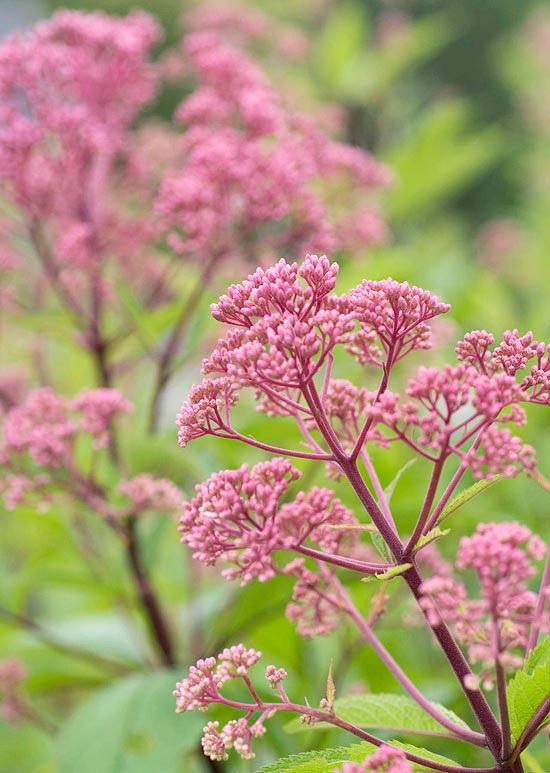
Aster – Another butterfly favorite, this fall blooming perennial comes in sizes from creepers, to 4 feet tall.

If that isn’t enough to get you started, try this list of butterfly plants from ‘Kids Growing Strong‘…
Don’t want to wait for the flowers to bloom? Make a DIY butterfly feeder with these instruction from ‘Gnowfglins’.

Shelter
Butterflies like protection from the wind, and a warm place to sun themselves. You can do this as simply as planting a tall tree that faces south, laying large flat rocks in protected areas of the garden, or going as far as building a butterfly house. ‘Woodlogger’ has a step by step tutorial on how to make a butterfly house…

Water
Butterflies need water too, but will usually drink from mud puddles or off leaves. They won’t usually risk drinking from a bird bath or deep water source. Provide a shallow saucer filled with wet sand… May not sound like a good cool drink to you, but works great for them!
Baby Food
Butterflies not only need flowers for nectar, if you want them to lay eggs and have a family right there in your yard, you need to provide a food the larva like to eat. Milkweed is a fav of Monarchs, parsley is a fav of the swallowtail… Research butterflies for your area.
That’s all there is to bringing butterflies to your garden… One last tip – Have your camera ready!
1
0
文章
Gina
2017年03月15日

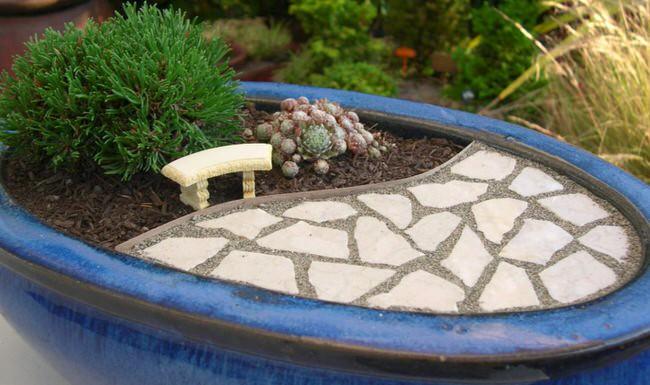
If you’ve been inside a nursery any time recently, or spent any time on Pinterest, you’ve probably seen some version of a miniature garden. Mini gardens are a whole cottage industry now, with classes and clubs and a cult like following. (In a good way!) Fairy gardens are closely related, and are simply miniature gardens tended by mythical fairy creatures. Makes perfect sense, right? I totally get the need for some garden fantasy, but I personally lean less towards the fairy and the cute kind of gardens, and more towards the mini versions of what I dream about for my big garden! I’ve had this idea for a miniature garden for while now, and I plan to get to it soon, even already have the copper container…and when I do, I will share it with you all, but in the meantime, I wanted to show you what some other great bloggers have done, and how they did it so you can get hooked as well! DIY miniature gardens, with tutorials, ideas and resources!
Our feature project, above, is a miniature garden with patio from much admired Garden Therapy. Stephanie has a complete tutorial at her site, including instructions on making a permanent patio and resources on where to find supplies.
From Pollyanna Reinvents, I love this one. Its a tabletop mini garden terrarium complete with a bucolic scene, and is perfect for chasing away winter blues indoors. Click through to find her step by step!

The Knitted Garden has created this inspiring miniature fairy garden, right in the base of a tree. I think this just epitomizes the magic of a garden.
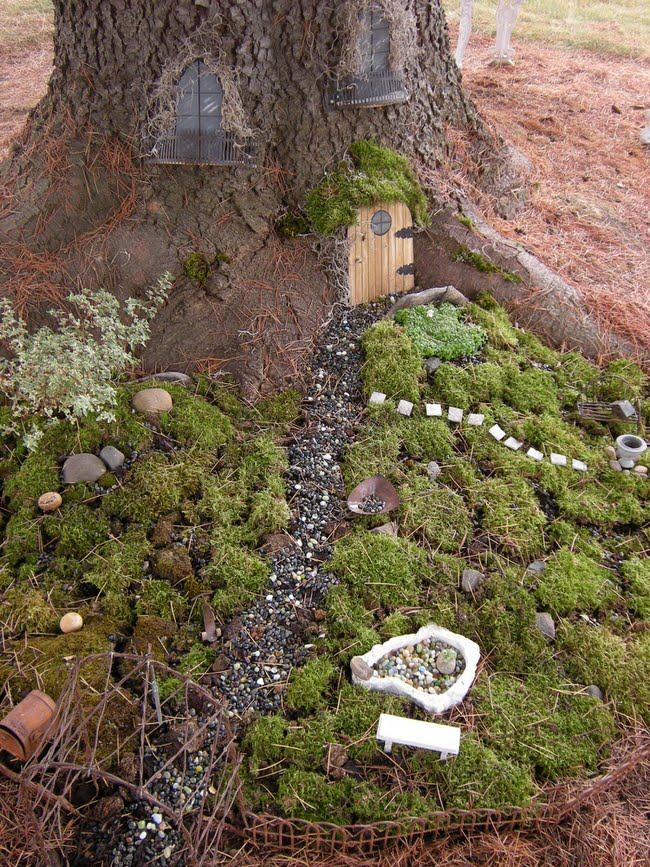
Find out how to make this tabletop tray garden from BHG… This is a great miniature garden for indoors!
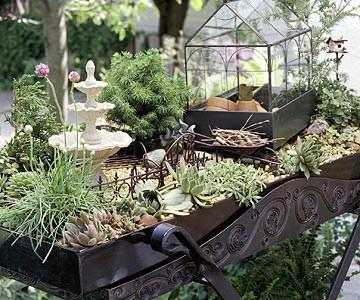
This miniature garden from Janit Calvo at ‘Two Green Thumbs‘ would be created with the same patio instructions as the ones from Garden Therapy in the first project…Visit Two Green Thumbs for more ideas and a great source of miniature garden supplies!
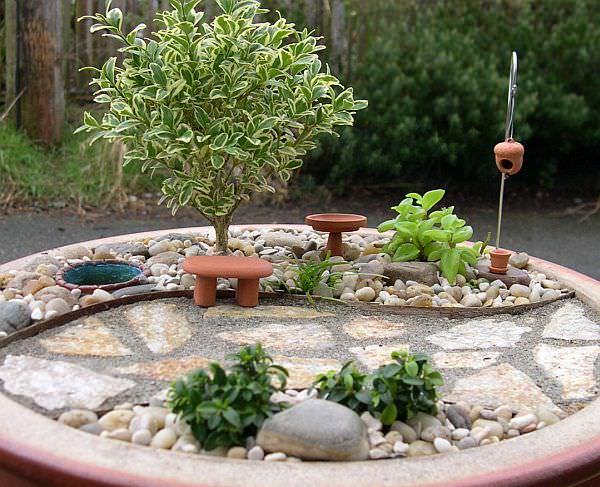
Organized Clutter Queen has a different take, with this kitchen miniature garden. Love her use of what she had and creating something great from nothing!

Unfortunately I don’t have a step by step for this broken pot mini garden, it was created by Pinterest user Sue Matyszak. Plenty of inspiration here! You can find a step by step for broken pot mini gardens at The Garden Diaries.

If you want to go an easier route, you can order this fairy garden broken planter kit from Laughing Orange Studio. Love this!
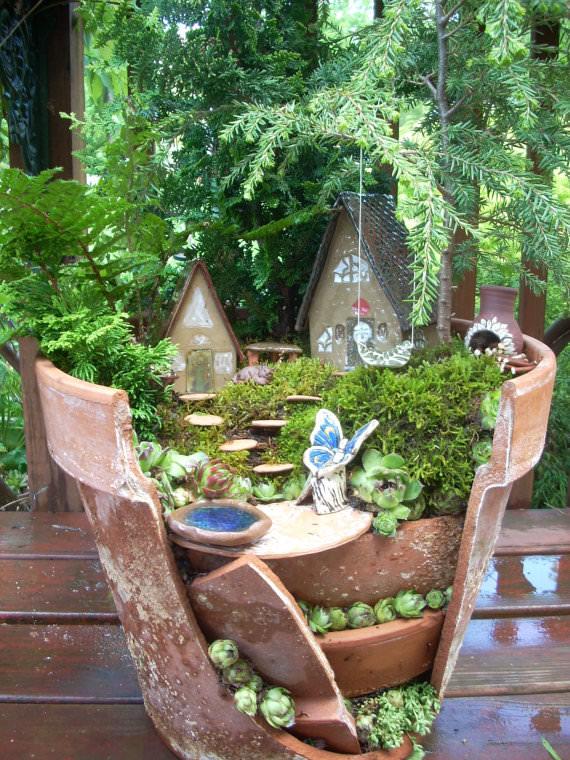
Another inspirational fairy garden built into a tree by artist Sally Smith… If you are interested in this type of miniature garden, visit her site and find out all about her and her resources!
Lastly, we have this tiny little miniature Teacup Garden, from Salt Tree. This is such a cute idea! What a nice gift this would make!
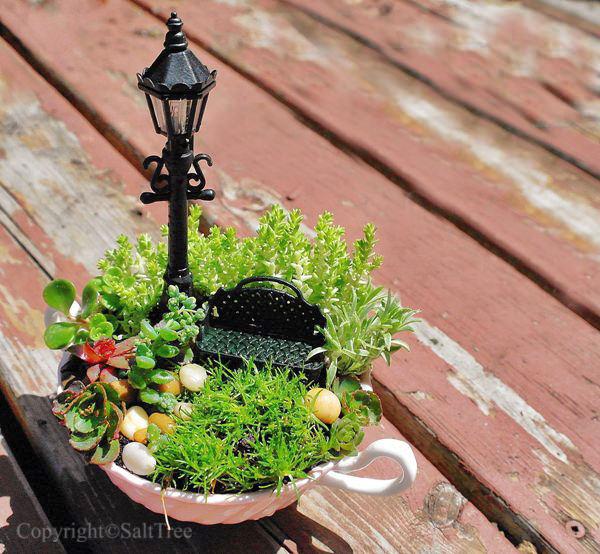
0
0
文章
Abigal
2017年02月23日

Who doesn’t love something made from nothing? #Gardens seem to be a natural home for all things re-used and up-cycled…it just seems to make nature happy, doesn’t it? And, it let’s us be uber-creative as well… So time to visit the local junk shop, ’cause here are some ideas for garden art that will give personality to any yard, porch or garden!

Art in Red Wagons has this great tutorial using can lids to create garden markers… I love the way they look after a little rust! Check out some of their other projects on this page as well!

Garden art mushrooms made from thrift store bowls and vases… A Pinterest reader suggested using a solar light inside? Or perhaps spray painting the whole mushroom after assembling? Be sure to use an exterior grade glue to secure the bowls to the vases.

Another take on using glassware as garden art… this colored glass tower would look wonderful in a cottage garden space!

This fence uses garden “junk” in a totally artsy way…Love this!
Empress of Dirt showcases a really creative piece of garden art… and ironing board woman! Here’s how.

Using an old headboard and some colorful paint, these gardeners reconfigured it into a piece of art with a practical side…a container!

So create some garden junk art for your garden! Use these ideas as a springboard, and learn to look at everyday items in new ways. We will leave you with some more “junk” garden art to inspire you!




Art in Red Wagons has this great tutorial using can lids to create garden markers… I love the way they look after a little rust! Check out some of their other projects on this page as well!

Garden art mushrooms made from thrift store bowls and vases… A Pinterest reader suggested using a solar light inside? Or perhaps spray painting the whole mushroom after assembling? Be sure to use an exterior grade glue to secure the bowls to the vases.

Another take on using glassware as garden art… this colored glass tower would look wonderful in a cottage garden space!

This fence uses garden “junk” in a totally artsy way…Love this!
Empress of Dirt showcases a really creative piece of garden art… and ironing board woman! Here’s how.

Using an old headboard and some colorful paint, these gardeners reconfigured it into a piece of art with a practical side…a container!

So create some garden junk art for your garden! Use these ideas as a springboard, and learn to look at everyday items in new ways. We will leave you with some more “junk” garden art to inspire you!



0
0
文章
Abigal
2017年02月23日

Halloween is just around the corner, and I’ve found that most of us DIY’ers are a creative bunch… Not decorating our porches and gardens for Halloween just seems wrong somehow… Few other times are we allowed to publicly let our imaginations go a little wild, and maybe even a little creepy… and yes, I’ll say it… a little sick. I sincerely believe Halloween is one of those times we can bring the fears of life that we live with every day down to size…to use the opportunity to make light of all the scary things out there in the world. Personally, I’m not into gross… creepy yes, but I’ll leave the gore to someone else. So here we go… our picks for #DIY #outdoor Halloween decorating ideas… let’s have some fun!

Can you imagine how creepy this would be, with the right, barely there lighting? This project uses standard chicken wire, and you can find the tutorial for shaping your fencing ghost here. I have seen some blogs recommending spray painting with glow in the dark paint. I think that would be cool until the paint losses its glow, so maybe placing where it gets hit by car lights, or a porch light casts just enough glow?

Tired of that old skeleton just hanging on the porch, blowing in the wind? Gotta love these creative takes… This first one you can find instructions here.

This one is way cool! Instructions at Halloween Forum.

Ok, this is just cute… and a little creepy, especially if done with a really large pumpkin! Check out how to make a pumpkin spider from Budget Wise Home.

These spider sacks are easy, cheap and creepy… what if you used semi sheer stockings to give them a more ethereal quality? Here’s the instructions from Hello Paper Moon.

Finally, want your Halloween ghosts to look a little more…um, realistic? Check out these easy versions!

Whatever you choose to do for your outdoor Halloween decorations, make sure they are creative and fun! Which are your fav’s, and if you know of others great tutorials, please share in our comments!

Can you imagine how creepy this would be, with the right, barely there lighting? This project uses standard chicken wire, and you can find the tutorial for shaping your fencing ghost here. I have seen some blogs recommending spray painting with glow in the dark paint. I think that would be cool until the paint losses its glow, so maybe placing where it gets hit by car lights, or a porch light casts just enough glow?

Tired of that old skeleton just hanging on the porch, blowing in the wind? Gotta love these creative takes… This first one you can find instructions here.

This one is way cool! Instructions at Halloween Forum.

Ok, this is just cute… and a little creepy, especially if done with a really large pumpkin! Check out how to make a pumpkin spider from Budget Wise Home.

These spider sacks are easy, cheap and creepy… what if you used semi sheer stockings to give them a more ethereal quality? Here’s the instructions from Hello Paper Moon.

Finally, want your Halloween ghosts to look a little more…um, realistic? Check out these easy versions!

Whatever you choose to do for your outdoor Halloween decorations, make sure they are creative and fun! Which are your fav’s, and if you know of others great tutorials, please share in our comments!
1
0
文章
Abigal
2017年02月21日

Got stones? Most of our #gardens have stones and rocks that we could do without. Our gardens here at TGG are full of them. Hauling them away is backbreaking and expensive! Whether you have just a couple pretty rocks, or are practically living in a stone quarry, here are some great ideas for using rocks in the garden creatively! (Shoot, you may love these ideas enough to actually bring stones into your garden!)

Rock Feet
Creating rock feet has taken Pinterest by storm (see photo above), and I must admit, it appeals to my family side, but doesn’t look too cutesy. Love this! Instructions are pretty self explanatory. You could use construction adhesive to lock them into place as well. Source: My Modern Met
Mosaic
Create mosaic art with stones on planters, stepping stones, or even in the ground as an accent to your plantings! Lay out your stones in the desired pattern first, then transfer to your surface and attach with construction adhesive. Check out the tutorial over at ‘Jeffrey Gardens’.

Cairns
A cairn is essentially a man made pile of stones, originally a Scottish tradition to note a landmark, or a memorial. They can be lovely testaments to nature within the garden, are easily made, and can be added to over time as a tradition of the home. Source: Houzz
Bugs for Kids
Remember the pet rock? There are a lot of cute and easy ideas for painting pet “bug” rocks that make a garden a delight for young and old alike. Great way to bring kids into the joy of gardening. Not sure of the source of this cute photo below. If anyone knows, please let us know in comments.

Dragonfly Stones
Another kids favorite, but great for any garden where nature has a hand. Pick up some simple gems, sequins and spark lies at the dollar shop or craft store. Choose a stone that’s slightly larger than the dragonfly you wish to create, and about the right shape. Lay out your sparklies until you have a design you like, then transfer and attach with construction adhesive. Looks cute tucked into some long grass, or in a ground-cover to partially hide the stones edges. This one from ‘Wisconsin Made’ gives you the idea or you can buy it from them here.

Inspiration Stones
Simple! Pretty stones, pretty saying, paint pen. Display on a walkway, piled in a planter, or tucked next to special #plants as secret garden surprises. A great example are these inspiration stones. #DIY them or buy them from ‘Elizabeth’s Embellishments’.

Creatively using stones and rocks in the garden is an inexpensive way to add a touch of whimsy and creativity, yet keep your garden space natural. Oh yea, and now you don’t have to pay the chiropractor!

Rock Feet
Creating rock feet has taken Pinterest by storm (see photo above), and I must admit, it appeals to my family side, but doesn’t look too cutesy. Love this! Instructions are pretty self explanatory. You could use construction adhesive to lock them into place as well. Source: My Modern Met
Mosaic
Create mosaic art with stones on planters, stepping stones, or even in the ground as an accent to your plantings! Lay out your stones in the desired pattern first, then transfer to your surface and attach with construction adhesive. Check out the tutorial over at ‘Jeffrey Gardens’.

Cairns
A cairn is essentially a man made pile of stones, originally a Scottish tradition to note a landmark, or a memorial. They can be lovely testaments to nature within the garden, are easily made, and can be added to over time as a tradition of the home. Source: Houzz
Bugs for Kids
Remember the pet rock? There are a lot of cute and easy ideas for painting pet “bug” rocks that make a garden a delight for young and old alike. Great way to bring kids into the joy of gardening. Not sure of the source of this cute photo below. If anyone knows, please let us know in comments.

Dragonfly Stones
Another kids favorite, but great for any garden where nature has a hand. Pick up some simple gems, sequins and spark lies at the dollar shop or craft store. Choose a stone that’s slightly larger than the dragonfly you wish to create, and about the right shape. Lay out your sparklies until you have a design you like, then transfer and attach with construction adhesive. Looks cute tucked into some long grass, or in a ground-cover to partially hide the stones edges. This one from ‘Wisconsin Made’ gives you the idea or you can buy it from them here.

Inspiration Stones
Simple! Pretty stones, pretty saying, paint pen. Display on a walkway, piled in a planter, or tucked next to special #plants as secret garden surprises. A great example are these inspiration stones. #DIY them or buy them from ‘Elizabeth’s Embellishments’.

Creatively using stones and rocks in the garden is an inexpensive way to add a touch of whimsy and creativity, yet keep your garden space natural. Oh yea, and now you don’t have to pay the chiropractor!
1
0
文章
Hande Salcan
2017年02月21日

Starting a small #garden with your child or grandchild is an excellent way for children to learn to learn how to care for the environment and gain an appreciation for the many birds and insects with whom we share our gardens. Tending a garden also serves as an introduction to the changing weather patterns and the seasonal cycles of nature from planting the seed, harvesting (e.g. eating the vegetables, picking and drying the flowers or collecting the seed) and then preparing for the next season. They also learn an important life lesson in responsibility. If they don’t water and nourish the plants they can die through lack of attention.

If you can, With your child decide what kind of garden your child would like – butterfly, herb, flower, vegetable etc. To make the project more fun and real buy child sized gloves, planting tools, wheelbarrow and watering can.
Sketch a plan for the garden and mark off the area in the garden. Maybe a flower garden around a playhouse or a small vegetable patch they can call their own.
Turn the soil breaking up any lumps and condition with organic compost if necessary.

If you don’t have a suitable area of ground use container pots, planter boxes, or even an old half wine barrel will do.
Children can get interested in gardening from a very young age and with a little encouragement discover this fun hobby while enjoying the two things they love – dirt and outdoors.
With very young children it is easier to grow flowers directly from seed. The roots on seedlings easily become damaged as they take them from the pots and transplant into the soil.

Let children choose their own plants and look for easy germinating types such as Cosmos, Snapdragons or the all time favourite Sunflowers. Bulbs are also a great favourite amongst young children but they can be typically impatient waiting for the bulbs to sprout and grow.
For vegetables – carrots, peas and strawberries tend to be a favourite as they are easy to grow and great to eat. One study found that when four-and five-year-olds spent about 30 minutes a week for eight weeks tending a garden, they were more likely to eat their vegetables. A challenge for most parents.
Create a garden journal and take photos as the project progresses so your child will have something to remember over the winter months until the next season begins.

If you can, With your child decide what kind of garden your child would like – butterfly, herb, flower, vegetable etc. To make the project more fun and real buy child sized gloves, planting tools, wheelbarrow and watering can.
Sketch a plan for the garden and mark off the area in the garden. Maybe a flower garden around a playhouse or a small vegetable patch they can call their own.
Turn the soil breaking up any lumps and condition with organic compost if necessary.

If you don’t have a suitable area of ground use container pots, planter boxes, or even an old half wine barrel will do.
Children can get interested in gardening from a very young age and with a little encouragement discover this fun hobby while enjoying the two things they love – dirt and outdoors.
With very young children it is easier to grow flowers directly from seed. The roots on seedlings easily become damaged as they take them from the pots and transplant into the soil.

Let children choose their own plants and look for easy germinating types such as Cosmos, Snapdragons or the all time favourite Sunflowers. Bulbs are also a great favourite amongst young children but they can be typically impatient waiting for the bulbs to sprout and grow.
For vegetables – carrots, peas and strawberries tend to be a favourite as they are easy to grow and great to eat. One study found that when four-and five-year-olds spent about 30 minutes a week for eight weeks tending a garden, they were more likely to eat their vegetables. A challenge for most parents.
Create a garden journal and take photos as the project progresses so your child will have something to remember over the winter months until the next season begins.
1
0
文章
Joss
2017年02月20日

Few flower gardens would be complete without annual flowers. Their earliness and generosity of bloom will bring color and grace to any garden. Annual flower plants can be placed among perennials to fill in gaps in their bloom times, worked into bulb plantings, or just planted in a bed by themselves. Annuals are versatile, lovely, and colorful.

An annual plant is a plant which completes its entire life cycle in one growing season. The plant will germinate from seed, grow to maturity, flower, set seed and die in a span of a few months. Annuals generally will flower much more generously and over a longer period than perennial plants.
Annuals have been divided into three general hardiness classes, hardiness being how much cold weather, or frost they can endure and still live, grow, and bloom. The three classes are warm weather annuals, cool weather annuals, and frost hardy annuals.
Warm weather annuals will tolerate no frost at all. These are set out after the last frost date for the area in which they are to be grown. Warm weather annuals would include zinnias, marigolds, and nasturtiums.
Cool weather annual plants can tolerate some light frost and may be planted in the garden earlier. Indeed, some of these thrive in the cooler weather early in the season. These would include snapdragons, petunias, and calceolaria.

Frost hardy annuals can tolerate quite a bit of frost, indeed some, like the pansy, can be fall planted in a sheltered location and will over winter just fine. The pansy, if mild periods in winter occur, may even flower during the cold months of November, December, and March. In our southeastern Indiana garden I have had blooming pansies in January and February. Stock, calendula, and larkspur are also cold hardy annuals which can tolerate some frost.
An annual flower garden can be a very rewarding endeavor as annuals provide a bounty of color of a long period of time. Annual plants are quick to grow and bloom and will provide many months of bloom for your garden.

An annual plant is a plant which completes its entire life cycle in one growing season. The plant will germinate from seed, grow to maturity, flower, set seed and die in a span of a few months. Annuals generally will flower much more generously and over a longer period than perennial plants.
Annuals have been divided into three general hardiness classes, hardiness being how much cold weather, or frost they can endure and still live, grow, and bloom. The three classes are warm weather annuals, cool weather annuals, and frost hardy annuals.
Warm weather annuals will tolerate no frost at all. These are set out after the last frost date for the area in which they are to be grown. Warm weather annuals would include zinnias, marigolds, and nasturtiums.
Cool weather annual plants can tolerate some light frost and may be planted in the garden earlier. Indeed, some of these thrive in the cooler weather early in the season. These would include snapdragons, petunias, and calceolaria.

Frost hardy annuals can tolerate quite a bit of frost, indeed some, like the pansy, can be fall planted in a sheltered location and will over winter just fine. The pansy, if mild periods in winter occur, may even flower during the cold months of November, December, and March. In our southeastern Indiana garden I have had blooming pansies in January and February. Stock, calendula, and larkspur are also cold hardy annuals which can tolerate some frost.
An annual flower garden can be a very rewarding endeavor as annuals provide a bounty of color of a long period of time. Annual plants are quick to grow and bloom and will provide many months of bloom for your garden.
2
0




